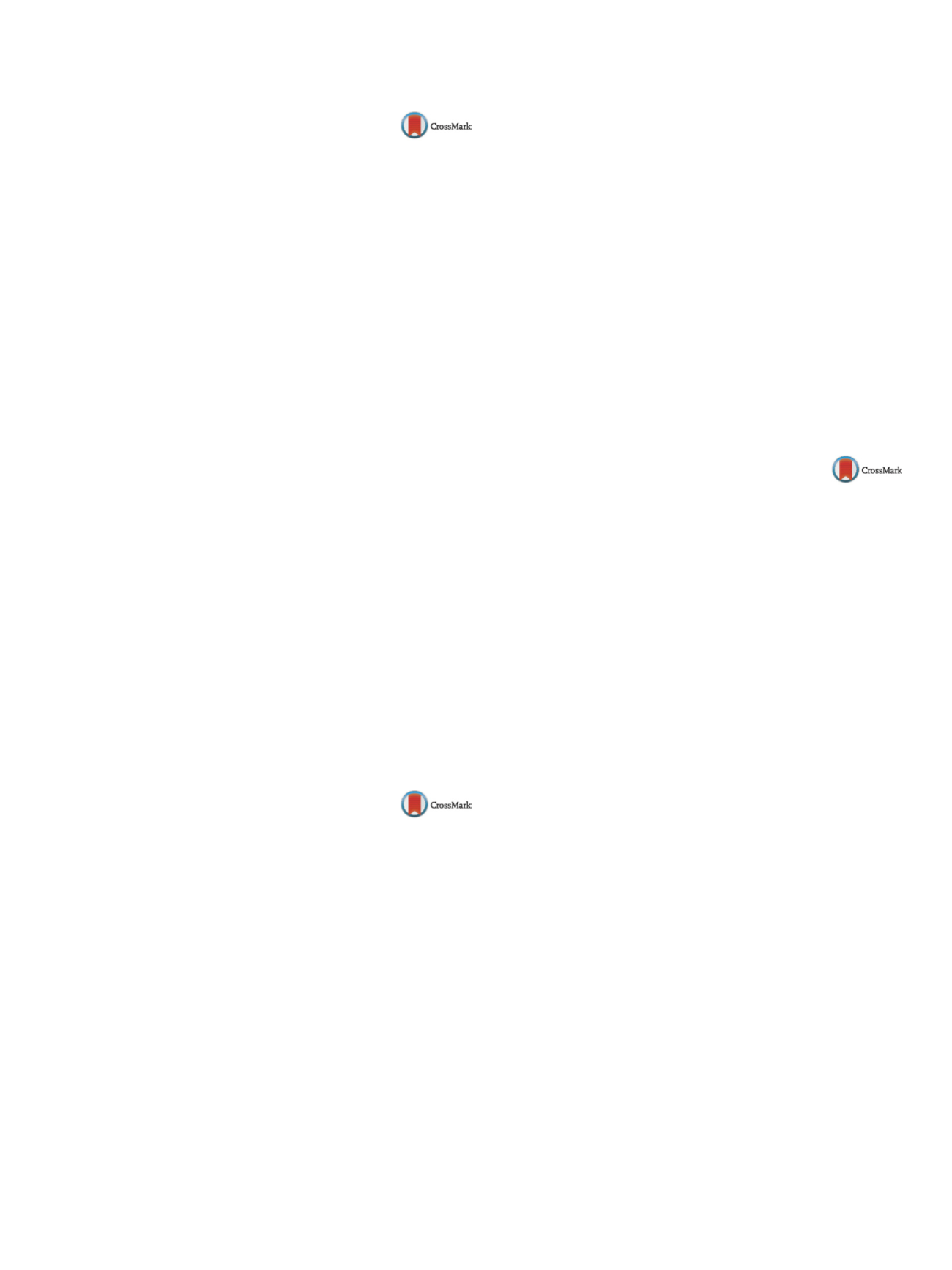

25th European Congress of Psychiatry / European Psychiatry 41S (2017) S106–S169
S141
EW0106
A person-centered approach to
burnout-depression overlap
A. Lichtenthäler , R. Bianchi
∗
University of Neuchâtel, Institute of Work and Organizational
Psychology, Neuchâtel, Switzerland
∗
Corresponding author.
Introduction
Burnout has widely infiltrated the popular culture
and has been extensively studied in both psychiatry and psy-
chology. However, there are currently no consensual or binding
diagnostic criteria for burnout. A major obstacle to the elevation
of burnout to the status of nosological category is the overlap of
burnout with depression.
Objectives
We examined whether burnout and depressive symp-
toms can be distinguished fromeach other using a person-centered
approach.
Methods
A total of 1759 French schoolteachers took part in
the present study (77% female; mean age: 41; mean length of
employment: 15). Burnout symptoms were assessed with the
Shirom-Melamed Burnout Measure (14 items) and depressive
symptoms with a dedicated module of the Patient Health Ques-
tionnaire (9 items). Data were primarily processed using two-step
cluster analysis. Correlation analysis and analysis of variance
(ANOVA) were additionally carried out.
Results
Considered as continuous variables, burnout and depres-
sion were found to be closely intertwined (
r
= 0.81; disat-
tenuated correlation: 0.91). Our cluster analysis revealed four
different participant profiles, identifiable as “minimal burnout-
depression” (
n
= 542; 31%), “low burnout-depression” (
n
= 566;
32%), “medium burnout-depression” (
n
= 412; 23%), and “high
burnout-depression” (
n
= 239; 14%). Burnout anddepressionplayed
equivalently important roles in cluster construction. Our ANOVA
confirmed that the four clusters differed from each other in terms
of burnout and depressive symptoms.
Conclusions
Our findings are consistent with the view that the
burnout syndrome is depressive in nature. A diagnostic category
dedicated to burnout may therefore not be needed.
Disclosure of interest
The authors have not supplied their decla-
ration of competing interest.
http://dx.doi.org/10.1016/j.eurpsy.2017.01.1975EW0107
Is it time to characterize burnout as a
depressive syndrome? A review of
recent research
R. Bianchi
1 ,∗
, I.S. Schonfeld
2, E. Laurent
31
University of Neuchâtel, Institute of Work and Organizational
Psychology, Neuchâtel, Switzerland
2
The City College of the City University of New York, Department of
Psychology, New York City, NY, USA
3
University of Franche-Comté, Department of Psychology, Besanc¸ on,
France
∗
Corresponding author.
Introduction
More than 40 years after the introduction of the con-
struct in the literature, the status of “burnout” remains unclear.
Whether burnout is anything other than a depressive syndrome
has been increasingly discussed in recent years.
Objectives
We examined the extent towhich burnout can be con-
sidered distinct from depression.
Methods
We reviewed the literature dedicated to burnout-
depression overlap over the last decade.
Results
Recent research suggests that burnout and depression
overlap in terms of (a) etiology, with (chronic) unresolvable stress
a common, key causal factor, (b) clinical picture and course, with
burnout and depressive manifestations inextricably linked such
that they increase or decrease together over time, (c) cognitive
biases, with burnout and depressive symptoms similarly predict-
ing increased attention to negative stimuli and decreased attention
to positive stimuli, (d) dispositional correlates (e.g, neuroticism,
rumination, pessimism), and (e) allostatic load—an index of the bio-
logical cost of adaptation to life adversity. Hypocortisolismhas been
linked to both burnout and depression with atypical features—a
highly prevalent form of depression. The often-invoked argument
that burnout is singularized by its job-related character is actually
invalid given that (a) depression can also be job-related and (b) the
“job-relatedness” of a syndrome is not nosologically discriminant
in itself.
Conclusions
Robust evidence that burnout overlaps with depres-
sion has accumulated in recent years. The burnout construct is
unlikely to capture a distinct pathological phenomenon. We pro-
pose that burnout be characterized as a depressive syndrome for
the sake of conceptual parsimony, theoretical clarity, and effective
public health policies.
Disclosure of interest
The authors have not supplied their decla-
ration of competing interest.
http://dx.doi.org/10.1016/j.eurpsy.2017.01.1976EW0108
Antidepressants augmented with
aripiprazole in the treatment of major
depressive disorder
S. Bise
1 ,∗
, G. Sulejmanpasic
2, D. Begic
3, M. Ahmic
41
Psychiatric hospital, women, Sarajevo, Bosnia and Herzegovina
2
Clinical Center University of Sarajevo, Psychiatric clinic, intensive
care, Sarajevo, Bosnia and Herzegovina
3
Psychiatric hospital, intensive care, Sarajevo, Bosnia and
Herzegovina
4
Psychiatric hospital, men, Sarajevo, Bosnia and Herzegovina
∗
Corresponding author.
Introduction
Major depressive disorder (MDD) does not con-
sistently respond to any single antidepressant (AD) therapy.
Adjunctive therapy with atypical antipsychotics (AA) showed
higher response rates compared with AD monotherapy. Aripipra-
zole, an oral quinolinone, is the first AA agent to be approved in the
US as adjunctive treatment in adult patients with MDD.
Aim The aim was to evaluate the efficacy and safety of adjunctive
low-dose aripiprazole combined with AD versus AD monotherapy
in patients with MDD with minimal improvement after 4 weeks of
prior AD monotherapy.
Methods
Ten patients with MDD and a history of minimal
improvement to 4 weeks of AD monotherapy (escitalopram
10–15mg/day, sertralin 50–100mg/day) were included in this
study. The patients were randomly assigned to 2 groups: one (
n
= 5)
with AD plus aripiprazole 5–7.5mg/day and the other (
n
= 5) with
AD alone. After baseline assessment, the subjects were followed up
at weeks 2, and 4. The primary efficacy was the mean change in
(HAM-D17) and CGI-I.
Results
The aripiprazole group exhibited significantly better effi-
cacy than the AD group in mean total score changes of HAM-D17
and CGI from the baseline to weeks 2, and 4. The item “work and
social activities” of HAM-D 17 showed significant improvement at
week 4, and the item “somatic symptoms (GI)” showed significant
improvement at week 2.
Conclusions
Adjunctive aripiprazole therapy significantly
improved depressive symptoms in MDD who didn’t respond to
AD monotherapy. Aripiprazole augmentation is an efficacious,
well-tolerated and safe treatment for patients with MDD.
Disclosure of interest
The authors have not supplied their decla-
ration of competing interest.
http://dx.doi.org/10.1016/j.eurpsy.2017.01.1977

















